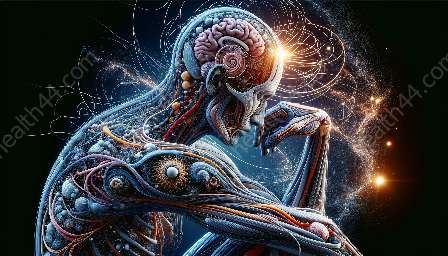The human body is an intricate and complex system with a multitude of organs, tissues, and cells that work together to sustain life. Understanding human anatomy is crucial for health education and medical training as it provides the foundation for understanding how the body functions, how diseases manifest, and how to provide effective medical care.
The Skeletal System
The skeletal system is the framework of the body, providing support, protection, and movement. It consists of bones, cartilage, ligaments, and tendons, and is divided into the axial and appendicular skeleton. The axial skeleton includes the skull, vertebral column, and rib cage, while the appendicular skeleton comprises the limbs and their girdles.
Bones
Bones are rigid organs that form the framework of the body and serve as anchors for muscles. They are classified by their shape into long bones (such as the femur), short bones (such as the carpals), flat bones (such as the sternum), and irregular bones (such as the vertebrae).
Cartilage, Ligaments, and Tendons
Cartilage is a firm, flexible connective tissue found in various locations in the body, including between bones, in the ear, and in the nose. Ligaments are tough bands of connective tissue that connect bone to bone, providing stability to the joints.
The Muscular System
The muscular system is responsible for movement, posture, and heat production. It is made up of muscles, which are divided into three types: skeletal, cardiac, and smooth muscles.
Skeletal Muscles
Skeletal muscles are attached to bones by tendons and allow for voluntary movement. They work in pairs, with one muscle contracting while the other relaxes.
Cardiac and Smooth Muscles
Cardiac muscles form the walls of the heart and are responsible for its rhythmic contractions, while smooth muscles are found in the walls of hollow organs such as the intestines, blood vessels, and bladder.
The Circulatory System
The circulatory system, also known as the cardiovascular system, is responsible for the transport of oxygen, nutrients, hormones, and waste products throughout the body. It includes the heart, blood vessels, and blood.
The Heart
The heart is a muscular organ that pumps blood through the circulatory system. It has four chambers: the left and right atria, and the left and right ventricles.
Blood Vessels
Blood vessels are the network of tubes that transport blood throughout the body. They include arteries, veins, and capillaries.
Blood
Blood is a fluid connective tissue that carries nutrients, oxygen, and waste products throughout the body. It consists of plasma, red blood cells, white blood cells, and platelets.
The Respiratory System
The respiratory system is responsible for the exchange of oxygen and carbon dioxide between the body and the environment. It includes the lungs and a series of air passages, such as the trachea, bronchi, and bronchioles.
Gaseous Exchange
During respiration, oxygen from the air is taken into the lungs and carbon dioxide is expelled from the body. This gaseous exchange occurs in the alveoli, tiny air sacs within the lungs.
The Digestive System
The digestive system is responsible for breaking down food into nutrients that can be absorbed by the body. It includes the mouth, esophagus, stomach, and intestines.
Organs of Digestion
The organs of digestion work together to digest food and absorb nutrients. The liver, pancreas, and gallbladder also play critical roles in digestion and nutrient absorption.
The Nervous System
The nervous system is the body's communication and control center, responsible for coordinating voluntary and involuntary actions. It includes the brain, spinal cord, and nerves.
The Brain
The brain is the command center of the nervous system, interpreting sensory information, initiating body movements, and controlling bodily functions.
Nerves
Nerves are the communication channels of the nervous system, carrying signals between the brain, spinal cord, and the rest of the body.


